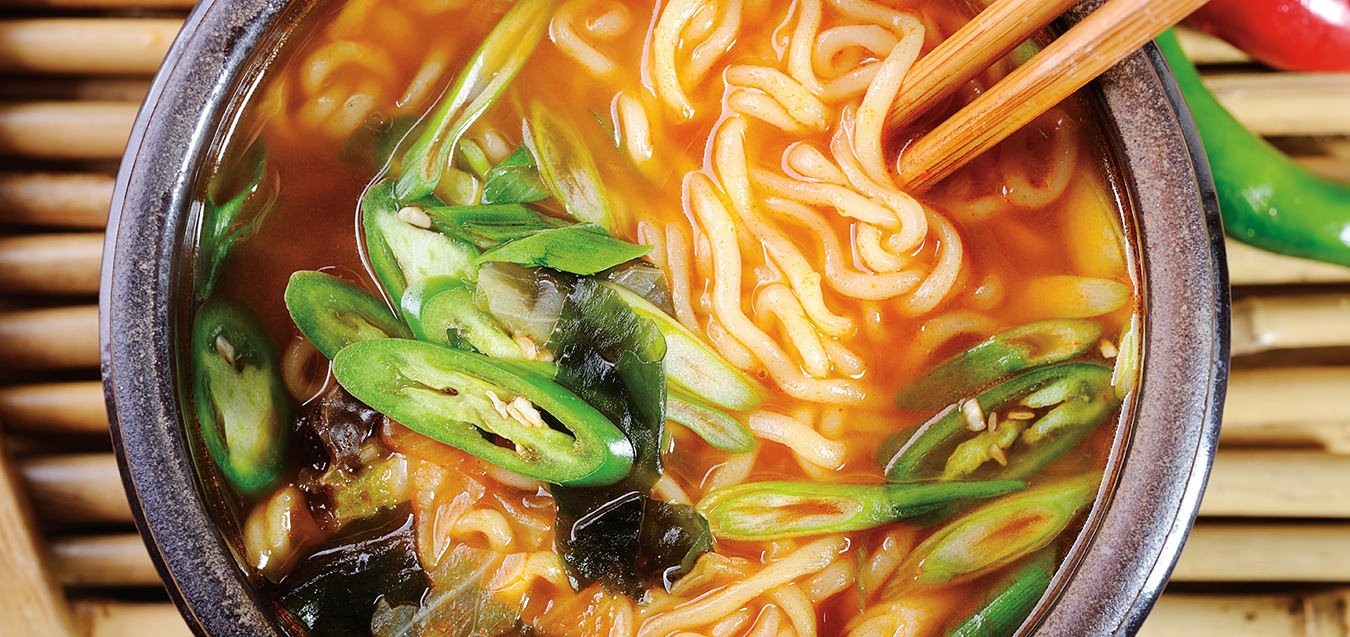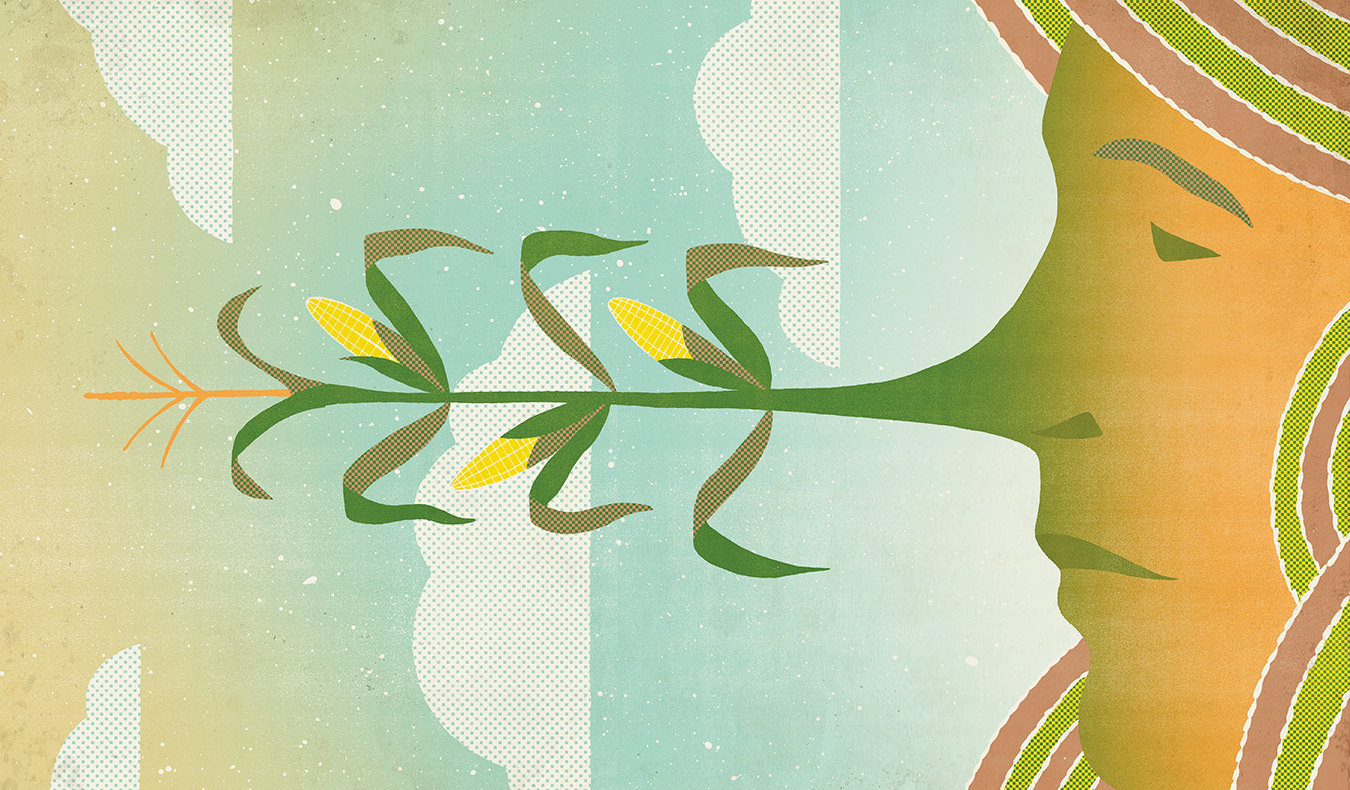Chestnuts
A holiday tradition.

Like lobsters and artichokes, chestnuts demand serious hands-on work. Before you gather them in the wild, you first must cope with their prickly green burr, enticingly split and revealing the glossy nut inside. Forget nutcrackers. Instead, you must strip off that tough skin in sharp little shards—and this is only Act Two. You can’t actually get at the pale chestnut meat until you’ve fiddled its acrid brown membrane from every nook and cranny. And finally—are you sure that’s a chestnut you’ve been labouring over? You can’t eat all of them. The look-alike horse chestnut is bitter, and better left to harden and turn into the conker beloved of British school kids. And not all “chestnuts” are chestnuts. Water chestnuts, which are marsh-grown in Asia, texturally poles apart, and in fact not technically a nut, are only so called because they look similar. And while we’re clearing up nomenclature, chestnuts—though they may be brown, gleaming, and firm as a surfer’s torso—have nothing to do with chests. Their name comes down to us via the ancient Greek kastaneia, and the old French chastaigne.
With its spread hands of leaves and creamy candles of blossom, a chestnut tree in spring is a lyrical sight, and once husked, peeled, and skinned, a chestnut cries out to be eaten—but not yet. Unlike other nuts, they’re better cooked than eaten raw, and better for you nutritionally, too. Low in fat, high in complex carbs, chestnuts contain well under half the calories of cashews and peanuts.
What can you make from chestnuts? What can’t you? Velvety soups, indulgent desserts, digestifs, even beer, and especially turkey stuffing, for this is the nut that symbolizes Christmas. Sixty-four years after he first recorded “The Christmas Song”, Bing Crosby singing “Chestnuts roasting on an open fire” still embodies the festive spirit. In Dickens’s A Christmas Carol, a jug of something warming and “a shovel-full of chestnuts on the fire” conclude the memorable day that converts Mister Scrooge to benevolence. Even today, the roast-chestnut sellers reminiscent of Victorian times are a cozy sight on city sidewalks.
Eating scorchingly hot nuts from a paper cone on a chilly afternoon warms the heart as well as the fingers. So does enjoying them Crosby-style in a fireside armchair. Find an authentic chestnut roaster, if you can, a long-handled iron pan with a perforated base, and be sure to slit each chestnut’s skin or carve a small X in its base to prevent it from exploding. Gadget-lovers can buy a short-bladed knife specifically for this purpose. Boiling the nuts for a few minutes also loosens their skins.
Wherever chestnuts grow—and they grow widely—they find their way into a country’s cuisine. German folk add them to the red cabbage, apples, and prunes that go with their festive goose. In Greece, skordalia me kastana describes a pounded paste of chestnuts, garlic, and olive oil. Fusing two nations in one dish, 19th-century Russian diplomat Count Nesselrode is nominally remembered in the Nesselrode pudding his French chef created, ramping up already-lush chestnut purée with dried fruits. There’s a Mount Nesselrode too, but don’t picture this 2,474-metre peak on the B.C. and Alaska border as being studded with raisin and apricot boulders. On the other hand, with its whipped- cream peak and mountain of chestnut purée, a Mont Blanc dessert does vaguely resemble its Alpine inspiration.
In Italy, this same pudding is called Montebianco—and it’s Italian chefs, cooks, and nonnas who merit the crown for knowing how to really exploit the chestnut. Roman scientist and historian Pliny the Elder wrote of chestnut varieties more than 2,000 years ago, and for eons in Italy’s poorer regions, chestnuts were a daily staple. As far back as the 16th century, chestnut flour was being made into castagnaccio, a flat cake topped with dried fruit, pine nuts, and rosemary known as la torta dei uomini poveri—“the poor man’s cake”.
Chestnuts in Italy called castagne and marroni are poorer and richer branches of the chestnut family, with castagne sharing their husks with one or two other chestnuts, and marroni living in solitary splendour. In France, they’re known as châtaignes and marrons, with the single nuts becoming outrageously rich marrons glacés. Repeatedly steeped in syrup, largely handmade, these bonbons allegedly first came to fame at the Versailles court of Louis XIV. But while the decadent candied version evokes comtesses languishing on chaises longues, chestnuts are just as delicious on family tables, their earthiness a perfect companion to game.
Deep in the Cowichan Valley on Vancouver Island, chef, author, and ardent forager Bill Jones of Deerholme Farm hosts monthly food events that hinge on season and region. Jones says that most chestnut trees locally are of the horse variety, but he does know of a handful of trees that produce edible chestnuts. His Canadian spin on marrons glacés is to confit them with local honey, and chestnut flour is the base for the gnocchi and pasta he serves with braised rabbit or duck.
But of all the ways to consume the amazing chestnut, roasting is arguably the tastiest. Just add a little salt, and, of course, a side order of Crosby.
Photo ©Güliz Özarslan/iStockphoto.




